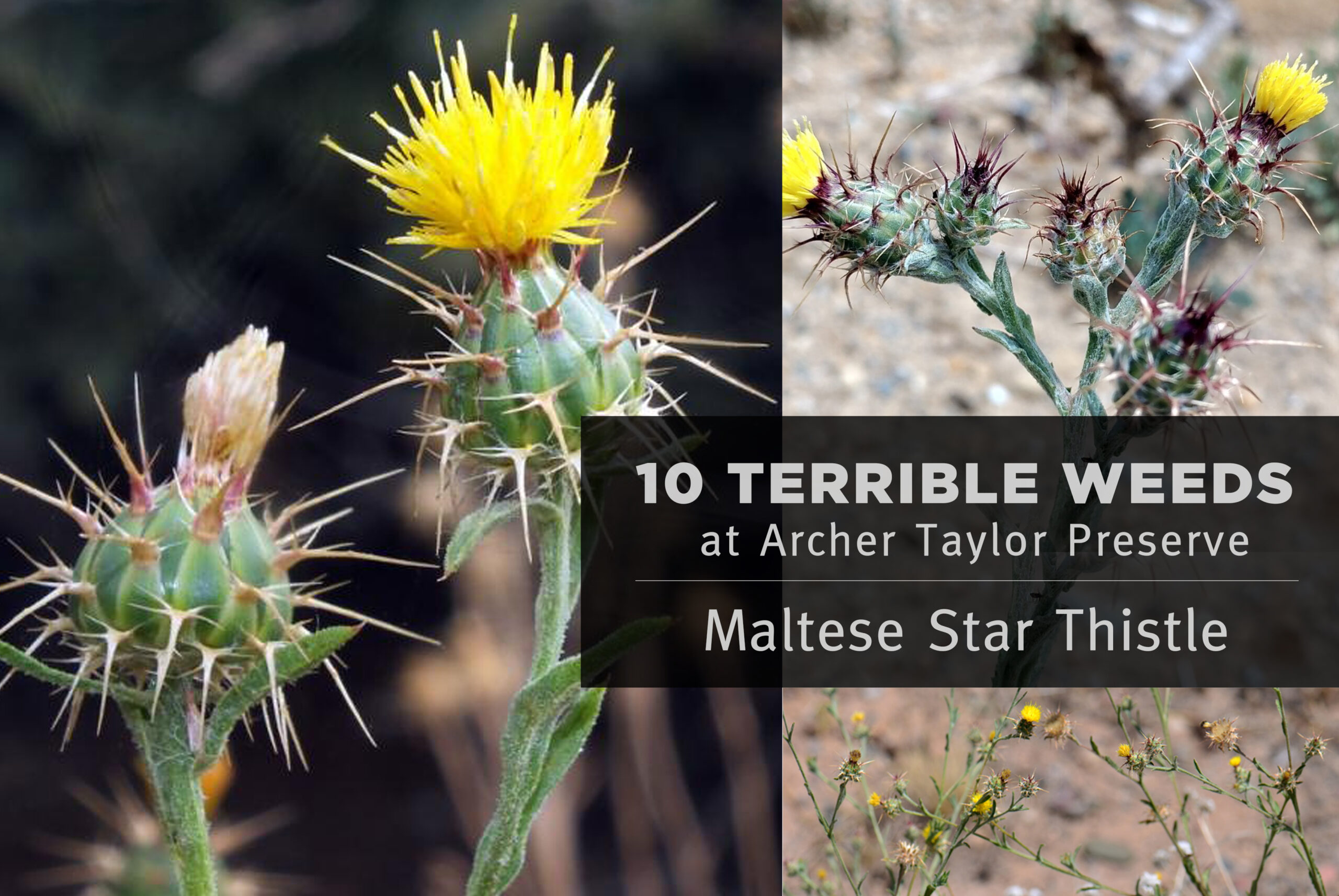Does this look like a repeat post on thistles? Actually it’s not! While similar looking to the yellow star thistle, this terrible weed is its cousin, the Maltese star thistle which was first discovered in the Far Meadow on Archer Taylor Preserve about the time yellow star thistle eradication was completed. Maltese star thistle is more difficult to locate because of its shorter height and being more compact than yellow star thistle. Both have bright yellow flowers with prominent spines radiating from the flower base. Unlike the spines on yellow star thistle which are stiff and ¾ to 1 inch long, the Maltese star thistle spines are shorter, less stiff and smaller, located below the bloom. Like many other thistles, the Maltese thistle begins life as a rosette, making elimination of the thistle at that stage possible. By the time the yellow flowers become readily visible, the first flowers have already bloomed, set seed and disbursed initial seeds.
Maltese star thistle inhabits similar environments like open hills, grasslands, woodlands, fields, roadsides and rangelands. When star thistles take over wild lands, they smudge out wildlife populations and native flora, overtaking areas with root development, rapid spread, diminishing light and growth for native plants and negatively impacting foraging opportunities for wildlife. It also has been known to be toxic to horses causing “chewing disease” as well.
Our staff continues to work annually to remove invasive weeds at our Archer Taylor Preserve. Want to help? Join us for a work party, we have one coming up on June 10th! Click here to find out more.

